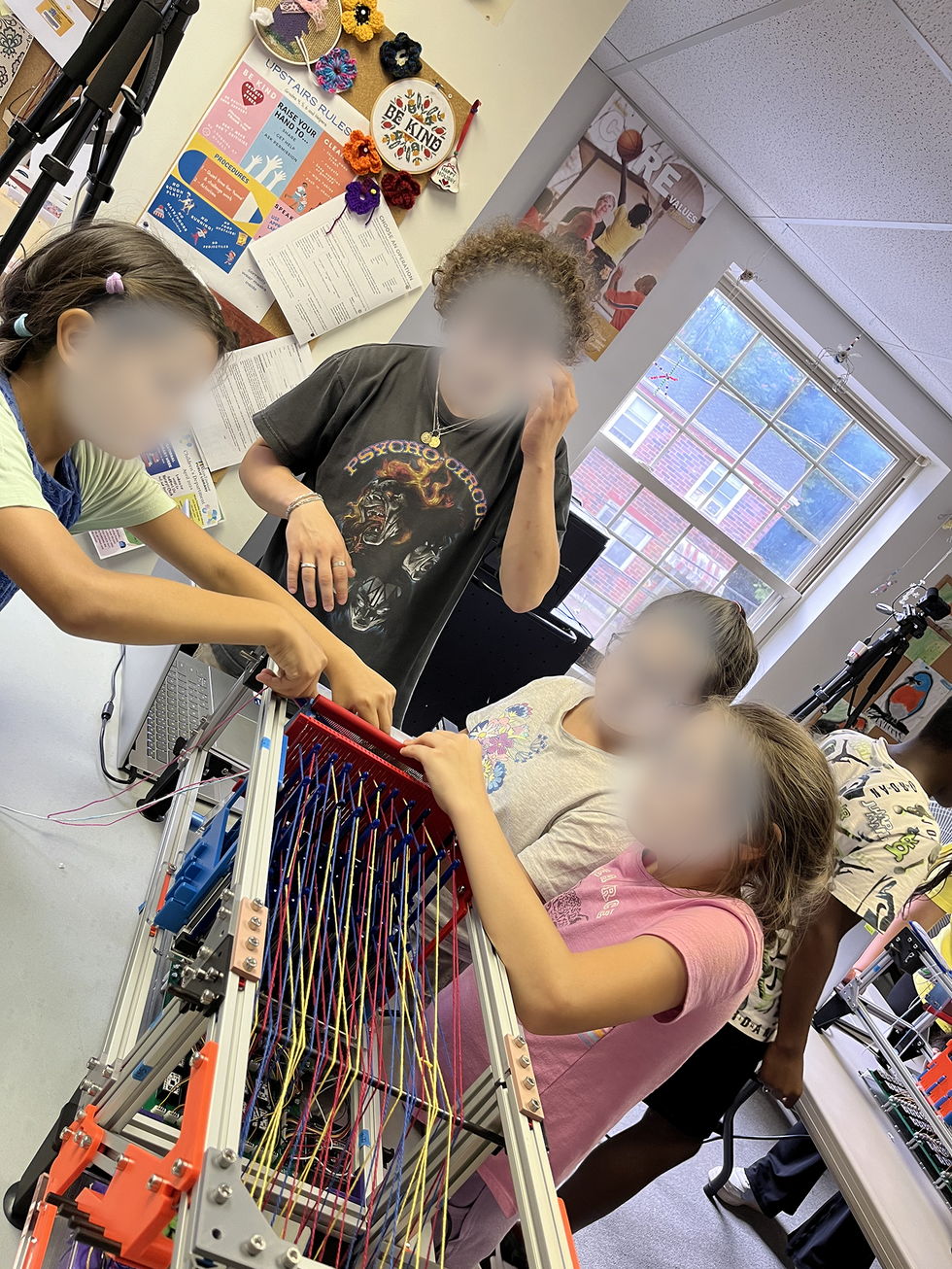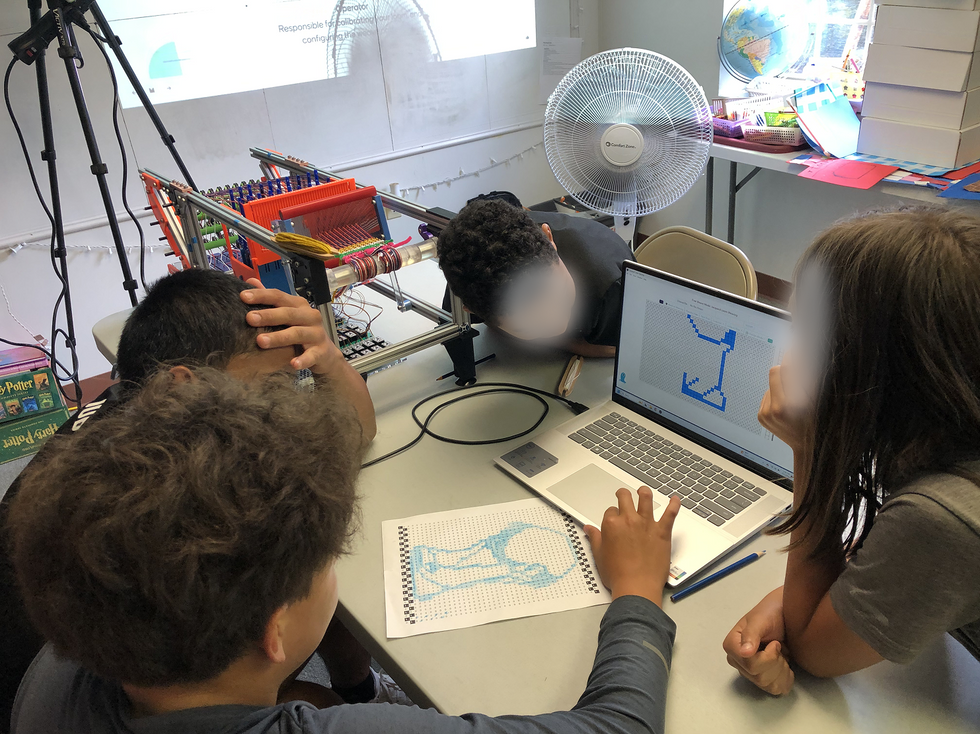Create Your First Project
Start adding your projects to your portfolio. Click on "Manage Projects" to get started
ThreadSpace: Equity-Oriented Educational Software
Location
Pittsburgh, PA
Date
June 2023 – Aug 2023
Role
Researcher & Engineer
Project type
Graduate Research
Google Site
Demo Video
TLDR:
I developed an educational weaving software from scratch in Electron, using JavaScript, HTML, and CSS, called ThreadSpace™. To test this new software, I led two two-week summer pilot courses with a high-school and middle-school audience, applying a counter-balanced assignment design with A/B testing, to iterate on ThreadSpace™ and the associated culturally relevant curriculum. ThreadSpace is maintained to this day, implemented every spring semester for the undergraduate collegiate course at Carnegie Mellon University.
______________________________________
Motivation:
The rapid rise in the maker movement is characterized by the global growth of maker spaces as a platform to promote STEM learning and creativity. In academic spaces and literature, the maker movement is centered on dismantling accessibility barriers to STEM learning. However, most learning systems in these environments do not leverage the knowledge and practices of communities of color or low- income neighborhoods. Currently, minoritized groups possess extensive knowledge unrecognized by academic spaces due to the historical “feminization” of crafting and artistic-based practices. SPEERLoom is a robotic loom developed by the Social Haptics Robotics and Education (SHRED) Lab designed for makerspace and classroom deployment. SPEERLoom integrates the practice of weaving, a traditional method of expressing one’s culture, with typical Western math curricula to legitimize the knowledge from minoritized communities.
As a 2023 Robotics Institute Summer Scholar with the SHRED Lab, I developed a user interface with TKInter in Python to communicate with a low-cost, self-assembled robotic loom to teach youth linear algebra, mechanical design, and weaving.
Recently, I developed a second version of the education software from scratch in Electron, using JavaScript, HTML, and CSS, called ThreadSpace™. To test this new iteration, I led two two-week summer pilot courses with a high-school and middle-school audience, applying a counter-balanced assignment design with A/B testing, to iterate on ThreadSpace™ and the associated culturally relevant curriculum. ThreadSpace is maintained to this day, implemented every spring semester for the undergraduate collegiate course at Carnegie Mellon University.
Our syncretic interface borrowed design principles from prior educational science, technology research, and tenets of social educational constructivism to support a cognitive model to understand how youth users reinforce linear algebra concepts through the process of weaving. Relying on principles such as selective exposure and a craft-based approach, this project introduced an equity-oriented design that centers underrepresented minorities' cultural history with weaving. This approach aims to stimulate youth users’ interest in STEM technology while highlighting the algorithmic operations required to construct culturally significant woven patterns. In this experience, I fully realized the ability to integrate my professional career with my social consciousness. By centering my target end-user as the principal stakeholder in my design, I align my pedagogical commitments to progressing equity for all through an educational initiative and software.















































